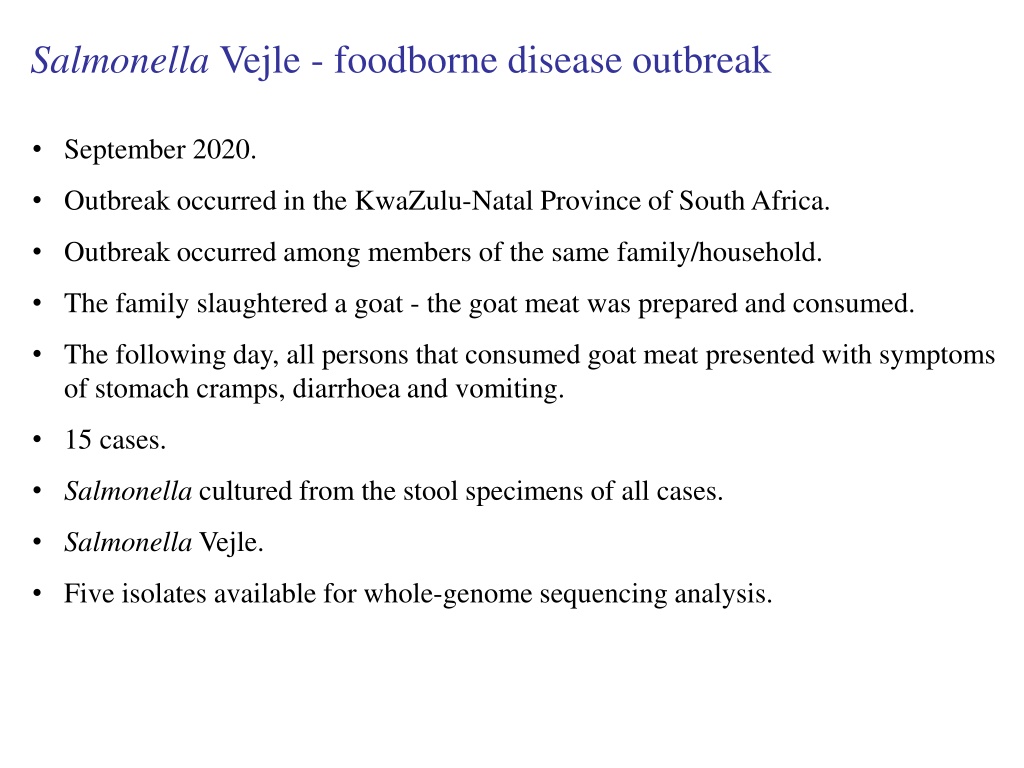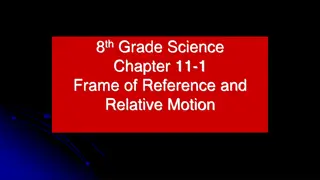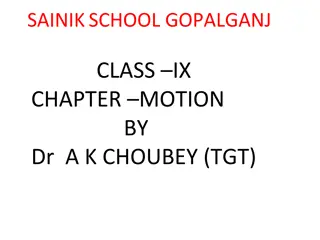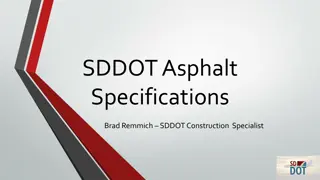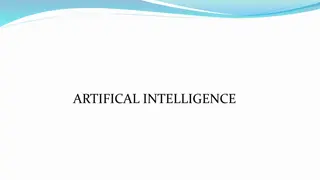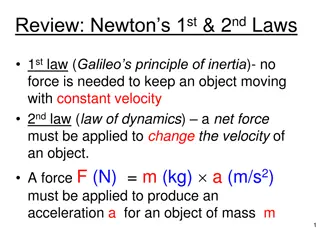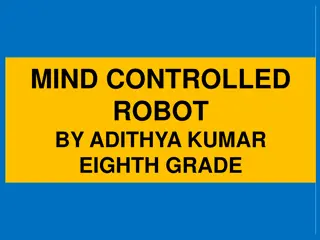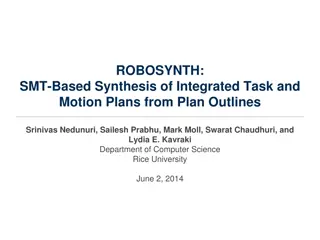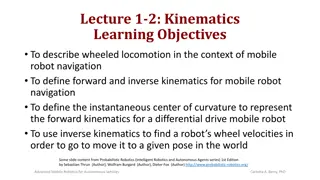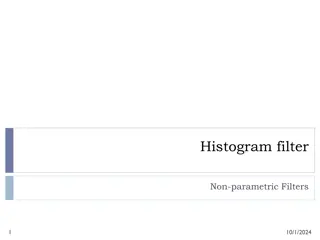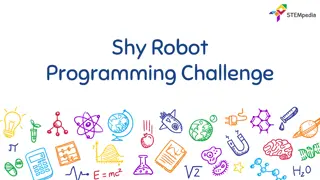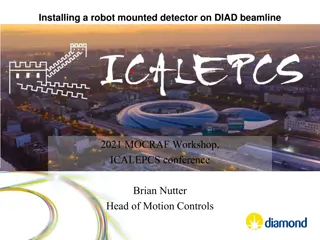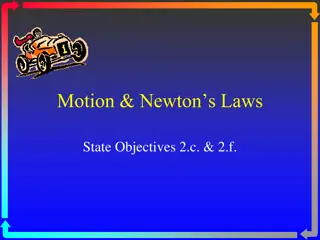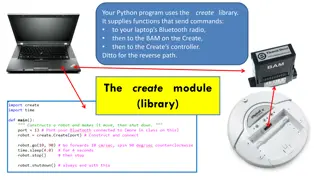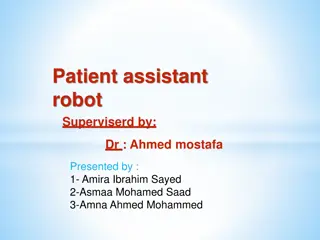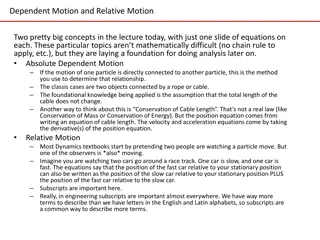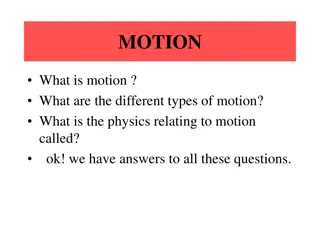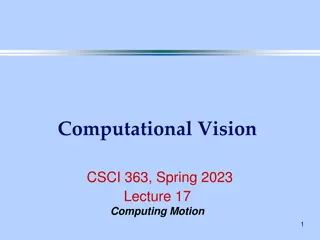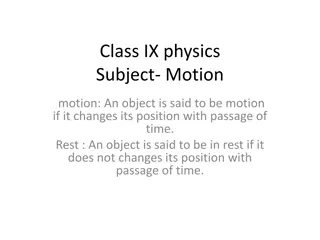Robocup Motion: HR-OS5 Humanoid Research Robot Specs & Demo
The RobocupRobocupMotion team focused on enhancing the motion capabilities of the HR-OS5 Humanoid Research Robot for the 2016 Robocup KSL in Germany. They worked on walking, ball kicking, stability, goalkeeper skills, and more. The robot utilized Dynamixel Servos, sensors like a gyroscope and accelerometer, a Sony camera, microphones, and an Intel computing unit for operation. Their main goal was to prepare the robot for the Capability Demo video to meet qualification requirements.
Download Presentation

Please find below an Image/Link to download the presentation.
The content on the website is provided AS IS for your information and personal use only. It may not be sold, licensed, or shared on other websites without obtaining consent from the author.If you encounter any issues during the download, it is possible that the publisher has removed the file from their server.
You are allowed to download the files provided on this website for personal or commercial use, subject to the condition that they are used lawfully. All files are the property of their respective owners.
The content on the website is provided AS IS for your information and personal use only. It may not be sold, licensed, or shared on other websites without obtaining consent from the author.
E N D
Presentation Transcript
Salmonella Vejle - foodborne disease outbreak September 2020. Outbreak occurred in the KwaZulu-Natal Province of South Africa. Outbreak occurred among members of the same family/household. The family slaughtered a goat - the goat meat was prepared and consumed. The following day, all persons that consumed goat meat presented with symptoms of stomach cramps, diarrhoea and vomiting. 15 cases. Salmonella cultured from the stool specimens of all cases. Salmonella Vejle. Five isolates available for whole-genome sequencing analysis.
Whole-genome sequencing (WGS) analysis Five isolates were further investigated using WGS. Illumina NextSeq technology. Sequencing data were uploaded the EnteroBase platform (http://enterobase.warwick.ac.uk/species/index/senterica). 1. Open the EnteroBase platform (http://enterobase.warwick.ac.uk/species/index/senterica) and register yourself as a user. Now Log in to the platform. 2. Perform the following steps. 3. Click on Search Strains to open the search box. Under Strain metadata , search the database as follows: Country equals South Africa AND Serovar equals Vejle AND Collection Yearequals 2020 AND Collection month equals 9 . Click submit. 4. How many isolates have been found?
5. Review the Experimental Data found for the isolates. 6. Under the Experimental Data , open the Serotype data output for the isolates - do results concur with the serovar data we uploaded in our Strain meta data ? 7. Under the Experimental Data , open the 7-gene MLST data output. What is the MLST subtype number for these isolates? 8. Under the Experimental Data , open the cgMLST V2 data output. 9. Create a MLST GrapeTree using the MSTree V2 algorithm. 10. Review the GrapeTree and comment on the genetic relatedness of the outbreak isolates - how many allele differences occur among the isolates? - would you consider our outbreak isolates to be highly related? 11. Go back to the table showing all the data for the isolates. 12. Using the cgMLST data, select one of our outbreak isolates and right-click on the ST column for the isolate, and search for nearest/closest matches in the database - with the Max Number MisMatches set to 1600 (this was demonstrated in my presentation).
13. Review output results. 14. How many isolates did your search return? 15. Review the nearest isolates to our outbreak cluster by clicking on the differences column and listing isolates from the smallest to largest number. Our outbreak cluster should now be on top of the list. Are there any identical or near matches to our outbreak cluster in the same timeline (September 2020)? Which isolate is the closest match to our outbreak cluster , from which country was it isolated and by how many allele differences is it different to our outbreak cluster ? 16. Create a MLST GrapeTree of all the isolates using the MSTree V2 algorithm. 17. Review the GrapeTree to visualize the data. Colour the nodes by country . 18. Would you consider Salmonella Vejle to be a Salmonella serotype that is commonly isolated worldwide and is therefore well represented (by thousands of entries) in the EnteroBase database OR is Salmonella Vejle rarely reported in the database.
